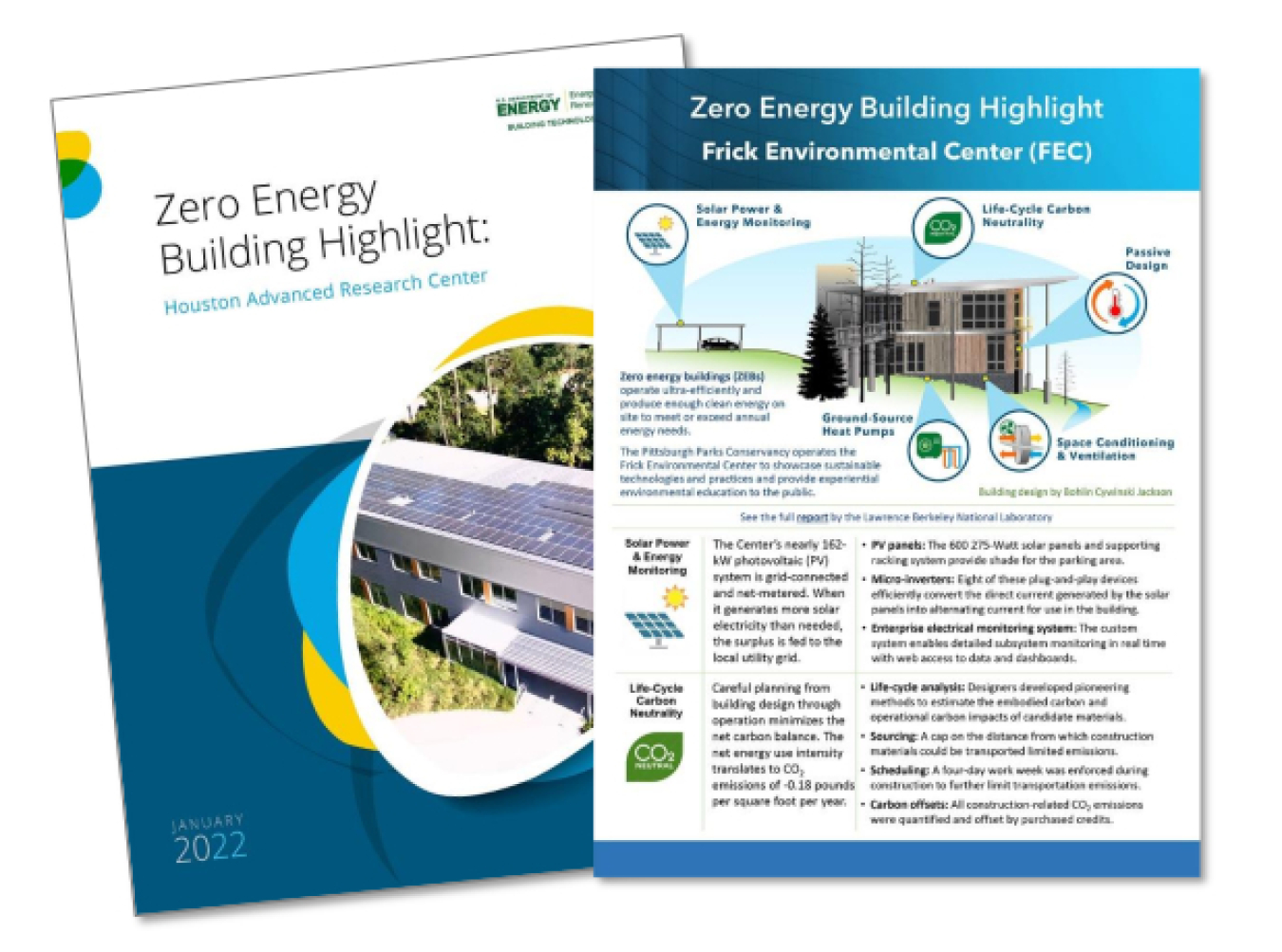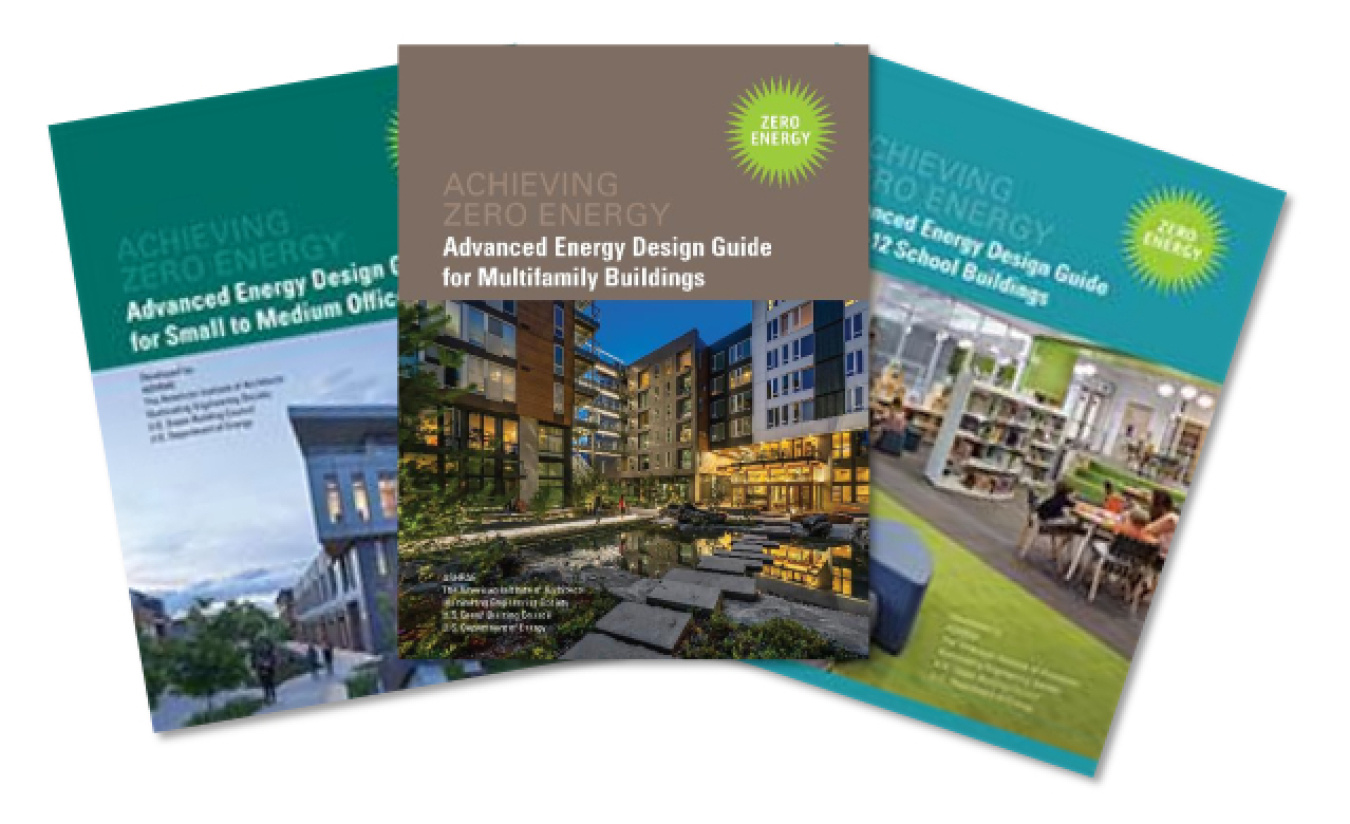Zero energy buildings combine energy efficiency and renewable energy generation to consume only as much energy as can be produced onsite through renewable resources over a specified time period. Achieving zero energy is an ambitious yet increasingly achievable goal that is gaining momentum across geographic regions and markets. Private commercial property owners have a growing interest in developing zero energy buildings to meet their corporate goals, and in response to regulatory mandates, federal government agencies and many state and local governments are beginning to move toward zero energy building targets.

Zero Energy Building Highlights – Three national laboratories explored the strategic designs, systems, and technologies used to minimize energy use and generate clean energy in three small office buildings at sites near Houston, Pittsburgh, and Atlanta. The series of reports and summaries looks at the coordinated planning, intelligent installation, and continuous monitoring that goes into achieving zero energy status with new construction (the Houston Advanced Research Center and Pittsburgh’s Frick Environmental Center) or retrofit (ASHRAE Global Headquarters near Atlanta—coming soon).

Advanced Energy Design Guides for Zero Energy Buildings – This series of guides, created through an industry partnership with ASHRAE and other market leaders, provides user-friendly guidance for achieving a zero energy performance in various building types. They include sets of energy performance targets for all climate zones. Strategies on how to achieve these energy targets are provided throughout and include setting measurable goals, hiring design teams committed to that goal, using energy simulation throughout the design and construction process, and being aware of how process decisions affect energy usage. The intended audience of this guide includes architects, design engineers, energy modelers, contractors, facility managers, building operations staff and facilities planning staff.
Zero Energy Building Definition - DOE developed a common national zero energy building definition with supporting nomenclature and guidelines to facilitate its use, working with the National Institute of Building Sciences (NIBS) and a broad group of market stakeholders. Federal government agencies, as well as state and local governments, have begun to move toward targets for zero energy buildings, but definitions of what it means to have a zero energy building have varied from region to region and from one building professional to another. A broadly accepted definition of zero energy building metrics and boundaries is foundational to efforts by governments, utilities, or private entities to recognize or incentivize zero energy buildings.
Communities of the Future: Accelerating Zero Energy District Master Planning – This conference paper introduces zero energy districts, reviews the structure of the Zero Energy District Accelerator, discusses the value of energy master planning, presents barriers to zero energy districts and how these are being addressed by zero energy district pioneers, and suggests pathways for wide-scale replication.
Video of Discovery Elementary, a Zero Energy School - Take a virtual tour of a zero energy school during this video. The video features administrators, teachers, parents, and students as they discuss the learning, financial, and environmental benefits of making a school zero energy.
A Guide to Zero Energy and Zero Energy Ready K-12 Schools - This guide was developed as part DOE’s Zero Energy Schools Accelerator (ZESA), a collaborative effort organized by DOE, with support from the National Renewable Energy Laboratory, and in partnership with school districts, states, and nongovernmental organizations around the country. This document outlines the steps to creating a zero energy school. These steps serve as a guide to ensure that a school achieves its zero energy design goal and maintains its zero energy status after it’s occupied and operating.
